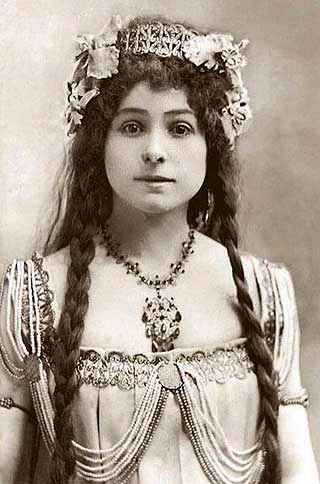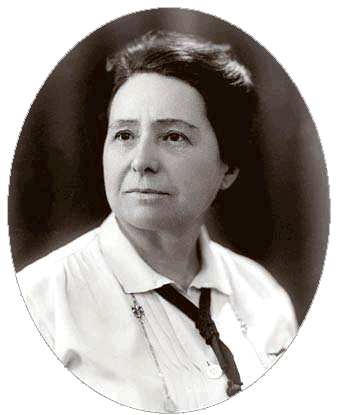
Occult
- A Mystic in Tibet - Alexandra
David-Neel

Mystic, anarchist, occultist and traveller,
Louise Eugenie Alexandrine
Marie David was born in Paris on the
24th of October 1868. The atmosphere at home during her childhood was, by all
accounts fairly austere and her parents strict. As a child her favourite books
were the science fiction fantasies of Jules Verne, and, perhaps as a form of
rebelliousness against her severe upbringing, she promised herself one day to
outdo the heroes of these stories. One of the first indications of this sense of
freedom and adventure was her running away at the age of five, just before the
family left to move to Brussels. Only after a widespread search was she caught
and marched to the police station by a gendarme, whom she scratched for his
trouble.
By the age of fifteen Alexandra had already
begun to study and had also obtained her first occult reading matter, an
English journal produced by the Society of the Supreme Gnosis, sent to her by a
woman called Elisabeth Morgan.
That summer her family spent the holidays in
Ostend, but Alexandra wanted something more interesting and walked into Holland
and crossed over to England. In London she found Mrs. Morgan, who immediately
persuaded her to return home.
 In 1885, when she was seventeen, Alexandra
again left home, this time travelling alone by train from Brussels to
Switzerland. She then hiked alone over the Saint-Gotthard Pass through the Alps
to the Italian lakes. Her distraught mother had to travel to the shores of Lake
Maggiore and retrieve her by then penniless daughter. In 1885, when she was seventeen, Alexandra
again left home, this time travelling alone by train from Brussels to
Switzerland. She then hiked alone over the Saint-Gotthard Pass through the Alps
to the Italian lakes. Her distraught mother had to travel to the shores of Lake
Maggiore and retrieve her by then penniless daughter.
London & the
Theosophical Society
The following year she entered the Royal
Conservatory of Brussels, and three years later won first prize for her soprano
voice. In 1888 she went to study in London, and stayed cheaply and securely at
the Society of Supreme Gnosis. Here, Elisabeth Morgan introduced her to Madame
Blavatsky, the founder of the Theosophical Society, whose esoteric ideas had a
significant influence on Alexandra. Alexandra returned to Brussels the next year
to carry on her studies of music and voice. In her early twenties she studied at
the Sorbonne and became a political radical, keeping a pistol and ammunition in
her Paris room. In 1891, when she was twenty-three, disguised as a man, she
joined a Paris cult led by Sri Ananda Saraswati, who used hashish to obtain
visions.
That same year an inheritance from her
godmother enabled her to for more than a year through Ceylon and India.
Fascinated by the mystery and magic of India and the eerie melodies of Tibetan
music Alexandra knew she would return again one day.
At Adyar, near Madras, she joined the
Theosophists under Annie Besant, and studied Sanskrit with them. At the holy
city of Benares, on the Ganges, she studied yoga with the great Swami
Bhaskarananda (of Varanasi), who lived
the whole year in a rose garden. She was fascinated by India and the Tibetan
music she heard there, but was forced to return to Brussels when she ran out of
money.
In 1899, Alexandra composed an anarchist
treatise with a preface by the French geographer and anarchist Élisée Reclus
(1820-1905). Publishers were, however, too terrified to publish the book, though
her friend Jean Haustont printed copies himself and it was eventually translated
into five languages. From 1894 to 1900 she lived as an aspiring actress/singer,
but by 1900 her career was going nowhere and she accepted a job with the
municipal opera in Tunis. Here she met Philip Neel, a thirty-nine-year-old
bachelor who worked as a railway engineer. They married on 4th August, 1904, and
took a villa at La Goulette next to the Mediterranean Sea.
Sanskrit Studies in India
In 1911 she undertook her second voyage to India, and
arrived at Pondicherry - all that remained of French India - where the police
kept an eye on her due to her extremist tendencies. By 1912 Alexandra was living
in Calcutta, where on one occasion, annoyed
by the behaviour of fakirs, she lay down on a bed of nails, and explained to a
passing British tourist that she needed a rest and was lucky to find a bed. She
also took part in Tantric rites, on one occasion the ritual of the so-called
'five forbidden substances': meat, fish, grain, wine, and sexual union.
She was progressing quickly with her Sanskrit studies, and was so
noted a
figure at holy Benares as to be honoured by the College of
Sanskrit there with an honorary doctorate of philosophy, a first for a
European woman.
 When she arrived in the small Himalayan state of Sikkim, in 1912,
she immediately felt at home, and
increased her knowledge of Buddhism by visiting all the important monasteries
there. She also met Prince Sidkeong of Sikkim. It was here that she became the
first European woman to meet the
Dalai Lama, at the time in exile. He told her to learn the Tibetan language. She
made great progress in this and met the Gomchen (great hermit) of the monastery
of Lachen. He was an impressive figure wearing a five-sided crown, a rosary
necklace of 108 pieces of human skull, an apron carved of human bone, and a
magic dagger. During the next two years Alexandra met with the hermit and learnt
the art of telepathy from him. She also attempted 'tumo' breathing, the Tibetan
art of generating body heat to keep warm in freezing conditions. When she arrived in the small Himalayan state of Sikkim, in 1912,
she immediately felt at home, and
increased her knowledge of Buddhism by visiting all the important monasteries
there. She also met Prince Sidkeong of Sikkim. It was here that she became the
first European woman to meet the
Dalai Lama, at the time in exile. He told her to learn the Tibetan language. She
made great progress in this and met the Gomchen (great hermit) of the monastery
of Lachen. He was an impressive figure wearing a five-sided crown, a rosary
necklace of 108 pieces of human skull, an apron carved of human bone, and a
magic dagger. During the next two years Alexandra met with the hermit and learnt
the art of telepathy from him. She also attempted 'tumo' breathing, the Tibetan
art of generating body heat to keep warm in freezing conditions.
Two years later she met a young man called
Aphur Yongden, and a friendship which was to last a lifetime developed between
them; he eventually became her adopted son. They both moved to a cave hermitage
in almost 4000 metres up in the mountains of northern Sikkim, close to the
border with Tibet, which it was forbidden to cross into. The solitude in this desolate cave was exactly what a hermitage should include but would definitely not have any of the amenities of life in civilization. They would have to fend for themselves finding food and safety in a land that was not only dangerous but also forbidden. Their ultimate goal was
to enter the famed holy city of Lhasa, but Tibet was rarely visited by Europeans
at that time, let alone European women. The first European woman to visit Tibet was Annie
Royle Taylor, an English explorer and missionary, who arrived there in 1892, and stayed for eight months. Nevertheless Alexandra and Yongden did
so twice, the result being expulsion from Sikkim in 1916.
Because of the war it was impossible to
return to Europe, so they travelled to Japan. In a letter to her husband at the
time Alexandra confessed her feelings for the Himalayas and Tibet -
'Truthfully, I am "homesick" for a
land that is not mine. I am haunted by the steppes, the solitude, the
everlasting snow and the great blue sky "up there"! The difficult hours, the
hunger, the cold, the wind slashing my face, leaving me with enormous, bloody,
swollen lips. '
Part 1
| Part
2
Advertise
on Mysterious People |